By: Michael Caranci, Trout Unlimited Shasta Trinity Cascades Chapter
Trout Unlimited Shasta Trinity Cascades Chapter just completed our large-scale Conservation Project on the Sacramento River in Redding on Thursday and Friday, April 5-6, 2018. The project was coordinated in cooperation with the California Department of Fish & Wildlife, the US Bureau of Reclamation, and the City of Redding, with support and approval from both the Kutras Family and the McConnell Foundation. During the two day work event, we had volunteer help and support from an incredible array of different groups: Trout Unlimited Shasta Trinity Cascades Chapter, Shasta Trinity Fly Fishers, California Department of Fish & Wildlife, Pacific States Marine Fisheries Commission, US Fish & Wildlife Service, Western Shasta Resource Conservation District, City of Redding, The Fly Shop, Aqua Golf, even a CalFire Inmate Crew.
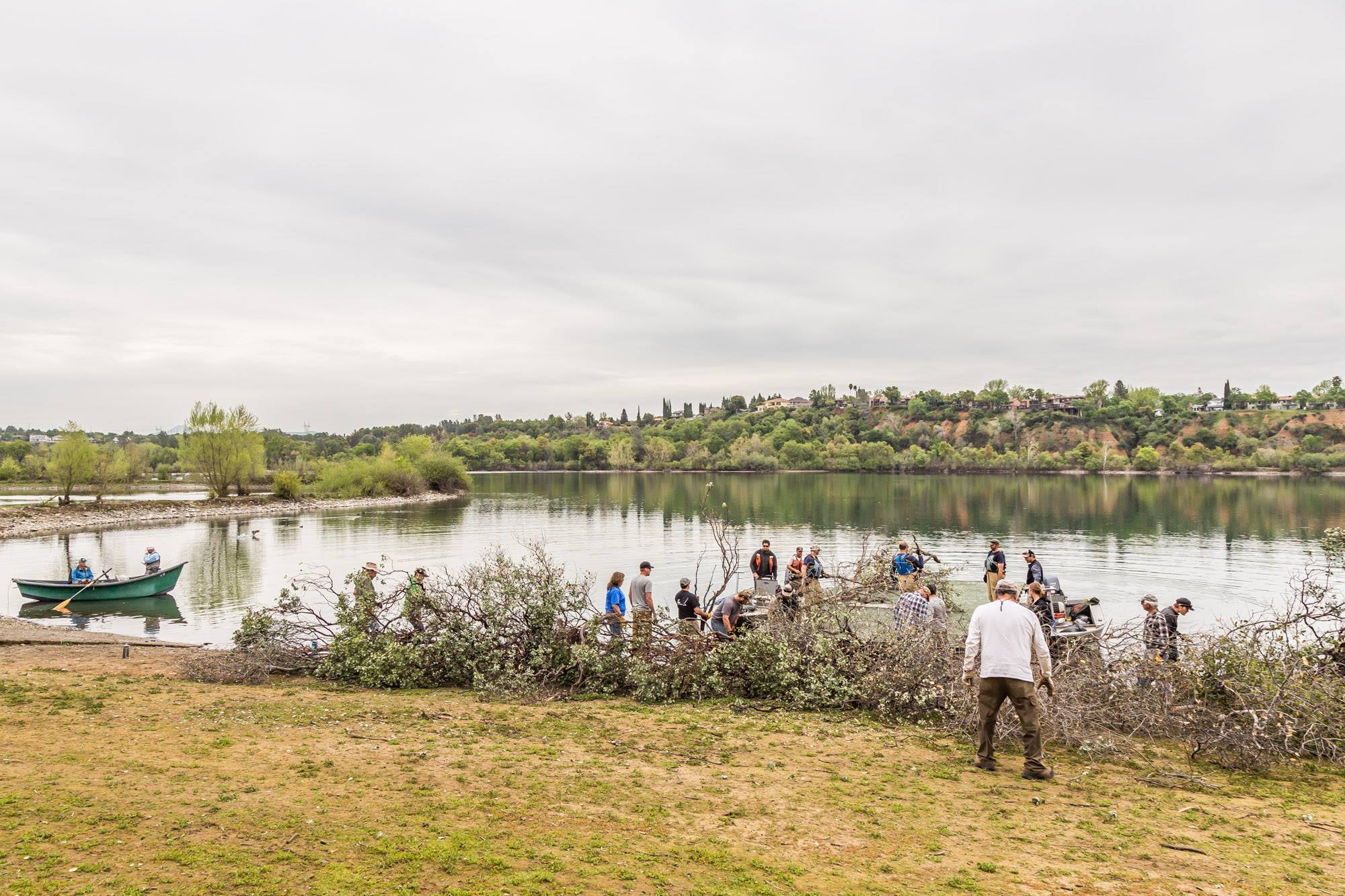
The project was designed to build and introduce new habitat to the river corridor to benefit juvenile salmon and trout. Specifically, the goal is to provide habitat to help sustain the dwindling populations of endangered Winter Run Chinook Salmon. The concept was to build piles of woody debris, to be anchored via sandbags filled with river rock and natural materials.
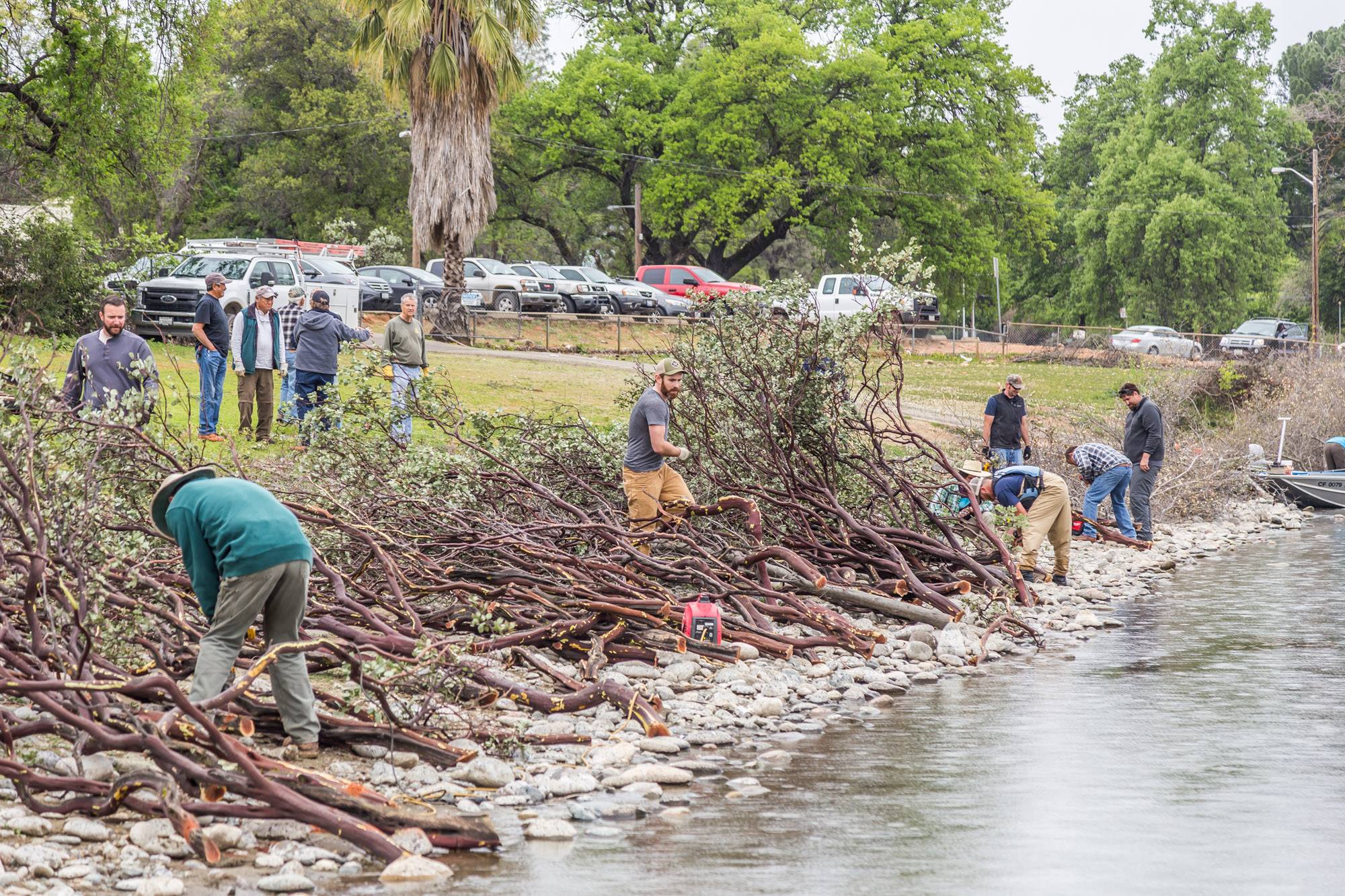
The California Department of Fish & Wildlife staff has been monitoring the area around Kutras Lake since 2003, finding that it consistently holds juvenile salmon and trout smolts year round. These smolts tend to concentrate along the edges of the “lake” off the main river channel. During evening and at night these young fish move to the middle of the “lake” to feed. But there are many predators here as well (including larger trout, smallmouth bass, and many birds), and these juvenile fish really need more areas of cover to stay safe during the day.
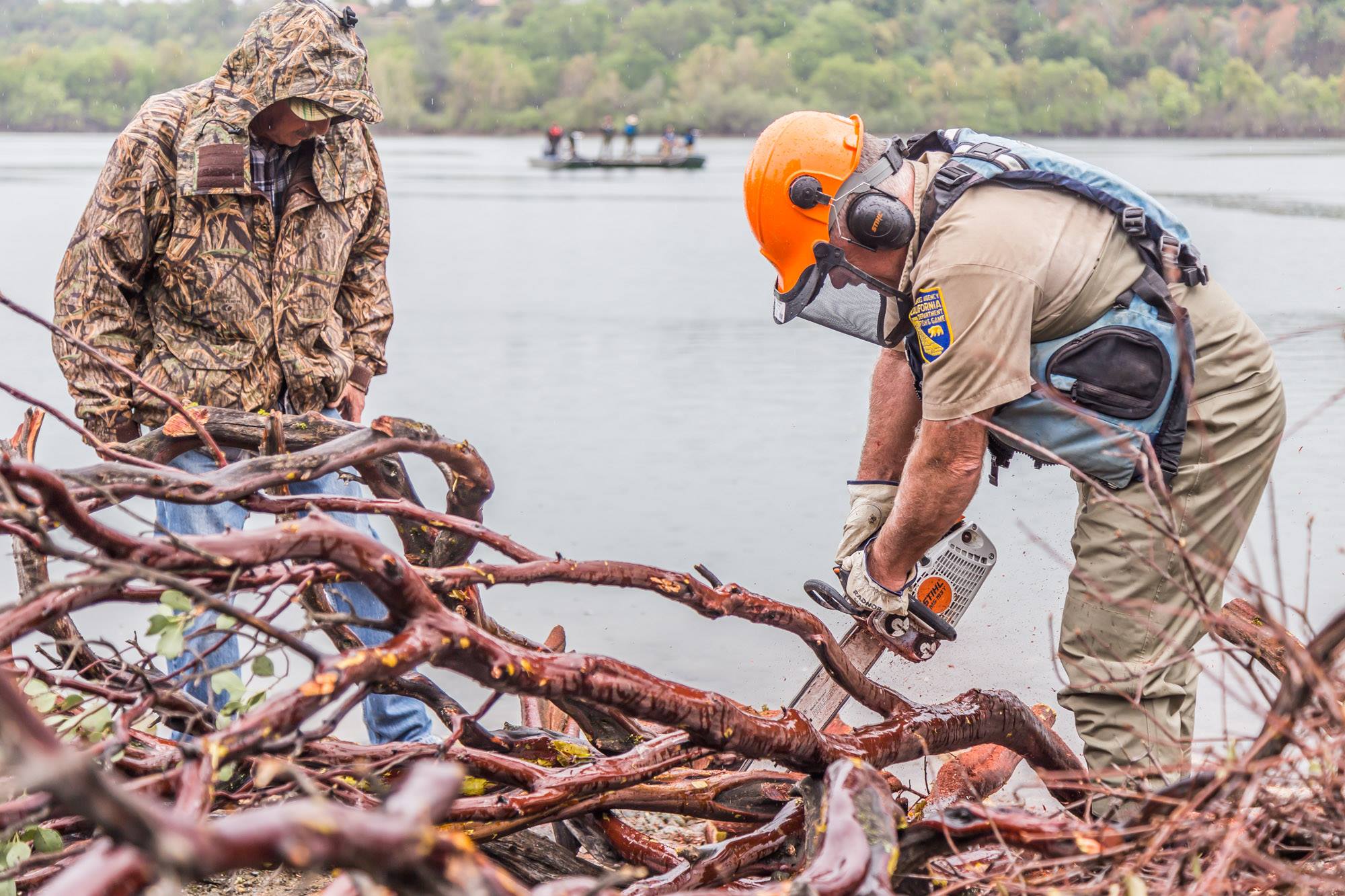
The work took place primarily in and along the banks of the Sacramento at Kutras Lake, the portion of the river within Redding City Limits near Park Marina Avenue, downstream of the Highway 44 Bridge on the west side of the river, operating out of the Park Marina Boat Launch.

Over the course of the two days — Thursday, April 5, and Friday, April 6, 2018 — we had a total of 22 volunteers, with a veritable platoon of trucks and at least 7 dump trailers for hauling brush and debris. A second crew of 14 from CalDFW, PSMFC, and USFWS showed up to launch their boats and small barge, as well as to help with an additional trailer and more workers to haul material. The City of Redding had staged piles of cut manzanita for us at two different sites near Park Marina, and cut additional branches at a remote area off about a 15 minute drive away, and a CalFire inmate crew cut additional branches for us while we were loading.

Due to the hard work of so many, we were able to get all of the wood and material delivered and laid out along the shoreline adjacent to the boat ramp by noon on the first day. Holes were drilled, and the next phase of the project began.
We started bundling the woody debris into massive piles on top of the barge, each containing 10-12 “branches” of hardwood, primarily manzanita with a mixture of oak as well. Each bundle was approximately 15 feet tall, 10 feet wide with a spiderweb of branches that would form the habitat for juvenile fish in the river. A steel wire connected all the branches together at the base, and was clipped to a heavy-duty sandbag that was filled with local river rock for ballast.
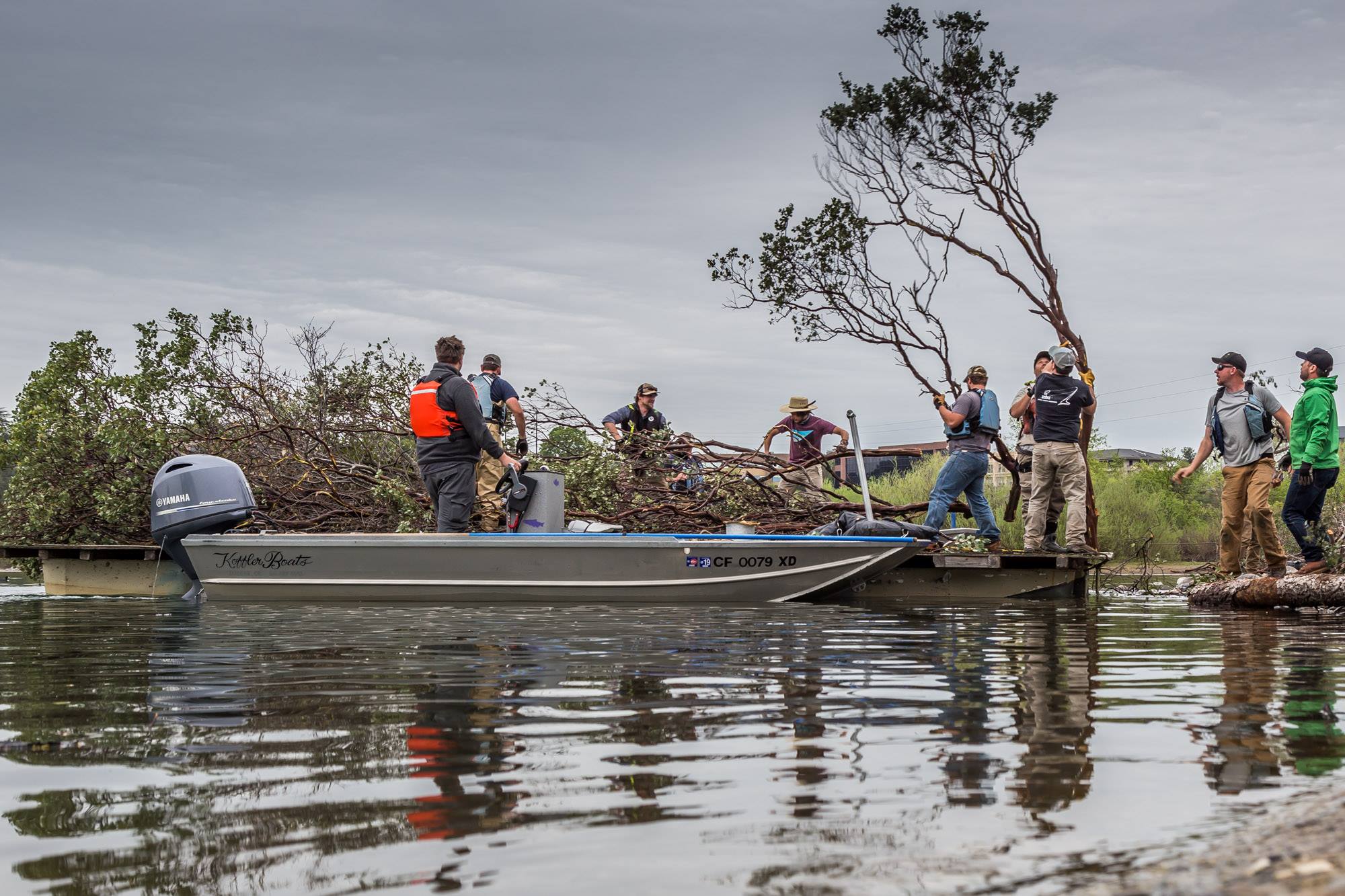
The CDFW had borrowed a barge from the Army Corps of Engineers, but it was rather small and could barely fit one of the massive piles of debris. They used this barge for the first pile, placed on the far side of the “lake.” TU-STC Vice President, Aaron Galwey, offered to loan a much larger barge from their family business, Aqua Golf, located just upstream from the project site. This new barge was more than twice as large, enabling us to mobilize two piles at a time from thereon out.
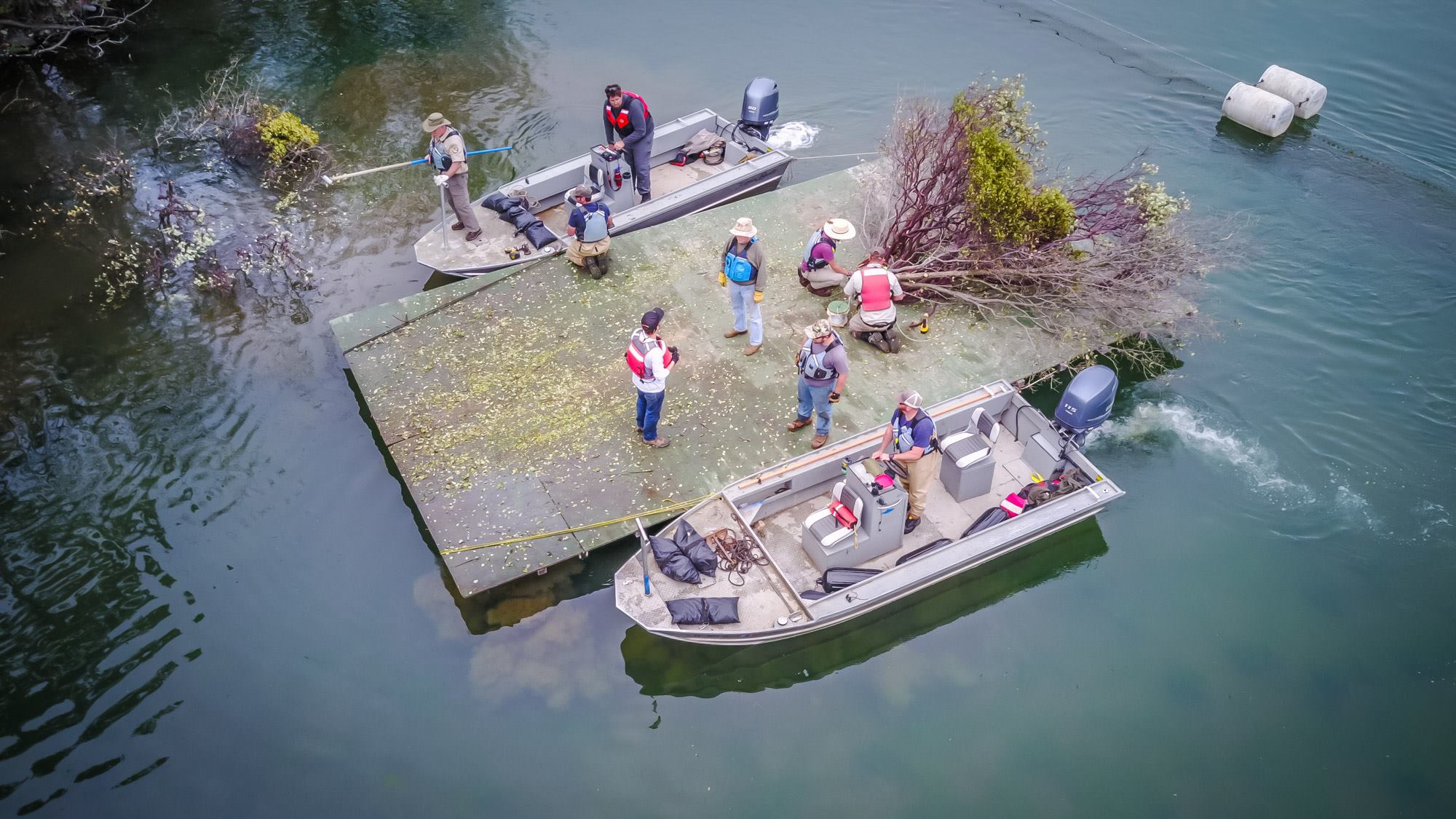
With help from volunteers on the shore and on the barge, over the next two days we were able to place a total of 17 of these structures in the river around various sites along the outside edges of the Kutras Lake area. The project goal had been 13, so we actually far exceeded our expectations.
Now, CalDFW and PSMFC staff will start snorkeling and monitoring these 17 sites over the course of the next few months. We anticipate they will find many juvenile fish — including salmon and trout — using these new habitat structures!
Thank you to all of our volunteers, the City of Redding for the materials, and our friends with the various state and federal agencies who made this possible!




Unbelievable! Thank You to All Concerned!